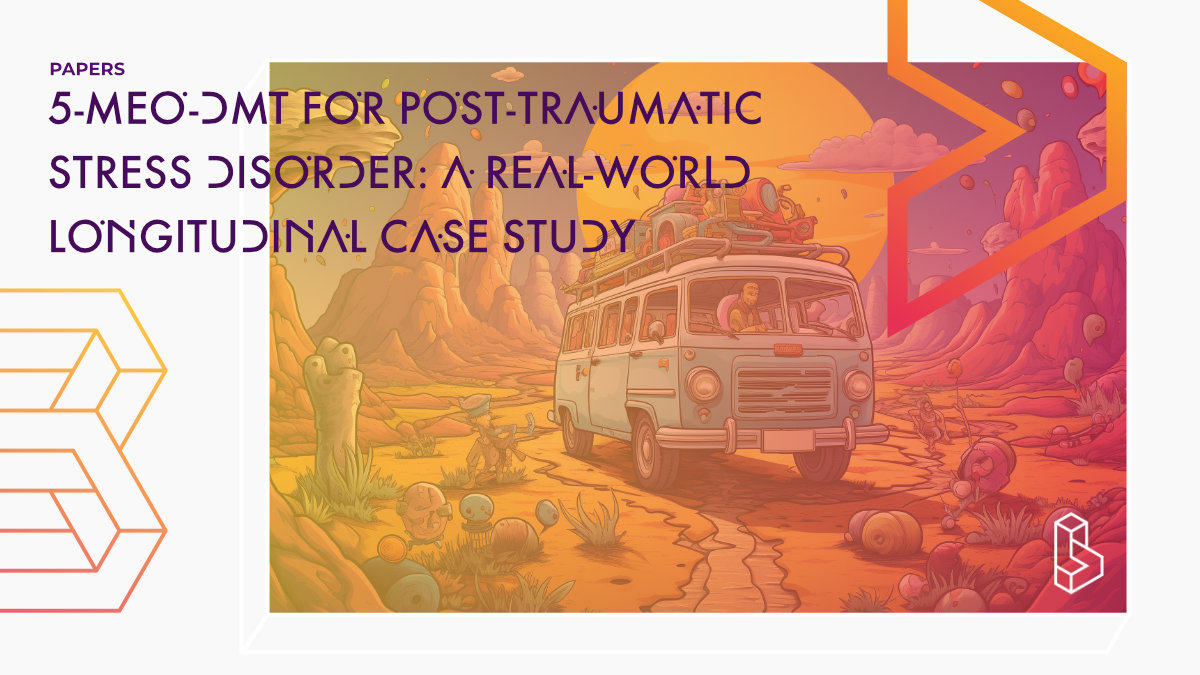This longitudinal case study (n=1) explores the therapeutic potential of 5-MeO-DMT in a 23-year-old female with chronic refractory PTSD. A single dose led to clinically significant improvements, including reductions in hopelessness and suicide risk, with sustained effects at 1-, 3-, 6-, and 12-month follow-ups, though not without reported risks such as acute nausea, overwhelming effects, and late-onset night terrors.
Abstract of 5-MeO-DMT for post-traumatic stress disorder: a real-world longitudinal case study
“Psychedelic therapy is, arguably, the next frontier in psychiatry. It offers a radical alternative to longstanding, mainstays of treatment, while exciting a paradigm shift in translational science and drug discovery. There is particular interest in 5-methoxy-N,N-dimethyltryptamine (5-MeO-DMT)—a serotonergic psychedelic—as a novel, fast-acting therapeutic. Yet, few studies have directly examined 5-MeO-DMT for trauma- or stress-related psychopathology, including post-traumatic stress disorder (PTSD). Herein, we present the first longitudinal case study on 5-MeO-DMT for chronic refractory PTSD, in a 23-year-old female. A single dose of vaporized bufotoxin of the Sonoran Desert Toad (Incilius alvarius), containing an estimated 10−15 mg of 5-MeO-DMT, led to clinically significant improvements in PTSD, with next-day effects. This was accompanied by marked reductions in hopelessness and related suicide risk. Improvements, across all constructs, were sustained at 1-, 3-, 6-, and 12-months follow-up, as monitored by a supporting clinician. The subject further endorsed a complete mystical experience, hypothesized to underly 5-MeO-DMT’s therapeutic activity. No drug-related, serious adverse events occurred. Together, results showed that 5-MeO-DMT was generally tolerable, safe to administer, and effective for PTSD; however, this was not without risk. The subject reported acute nausea, overwhelming subjective effects, and late onset of night terrors. Further research is warranted to replicate and extend these findings, which are inherently limited, non-generalizable, and rely on methods not clinically accepted.”
Authors: Anya Ragnhildstveit, Ryan Khan, Paul Seli, Lisa C. Bass, River J. August, Miriam Kaiyo, Nathaniel Barr, Laura K. Jackson, Michael S. Gaffrey, Joseph P. Barsuglia & Lynnette A. Averill
Summary of 5-MeO-DMT for post-traumatic stress disorder: a real-world longitudinal case study
Introduction
5-MeO-DMT is a natural, short-acting psychoactive indolealkylamine found in several plant, fungi, and animal species. Indigenous cultures may have used it for spiritual and ceremonial practices, yet little evidence supports such claims.
5-MeO-DMT is a nonselective serotonin (5-HT) receptor agonist that binds to dopamine, serotonin, and norepinephrine transporters. It is processed via oxidative deamination into the active metabolite, bufotenine, which can produce toxic interactions with MAO inhibitors, such as antidepressants.
Find this paper
5-MeO-DMT for post-traumatic stress disorder: a real-world longitudinal case study
https://doi.org/10.3389/fpsyt.2023.1271152
Open Access | Google Scholar | Backup | 🕊
Cite this paper (APA)
Ragnhildstveit, A., Khan, R., Seli, P., Bass, L. C., August, R. J., Kaiyo, M., ... & Averill, L. A. (2023). 5-MeO-DMT for post-traumatic stress disorder: a real-world longitudinal case study. Frontiers in Psychiatry, 14.

